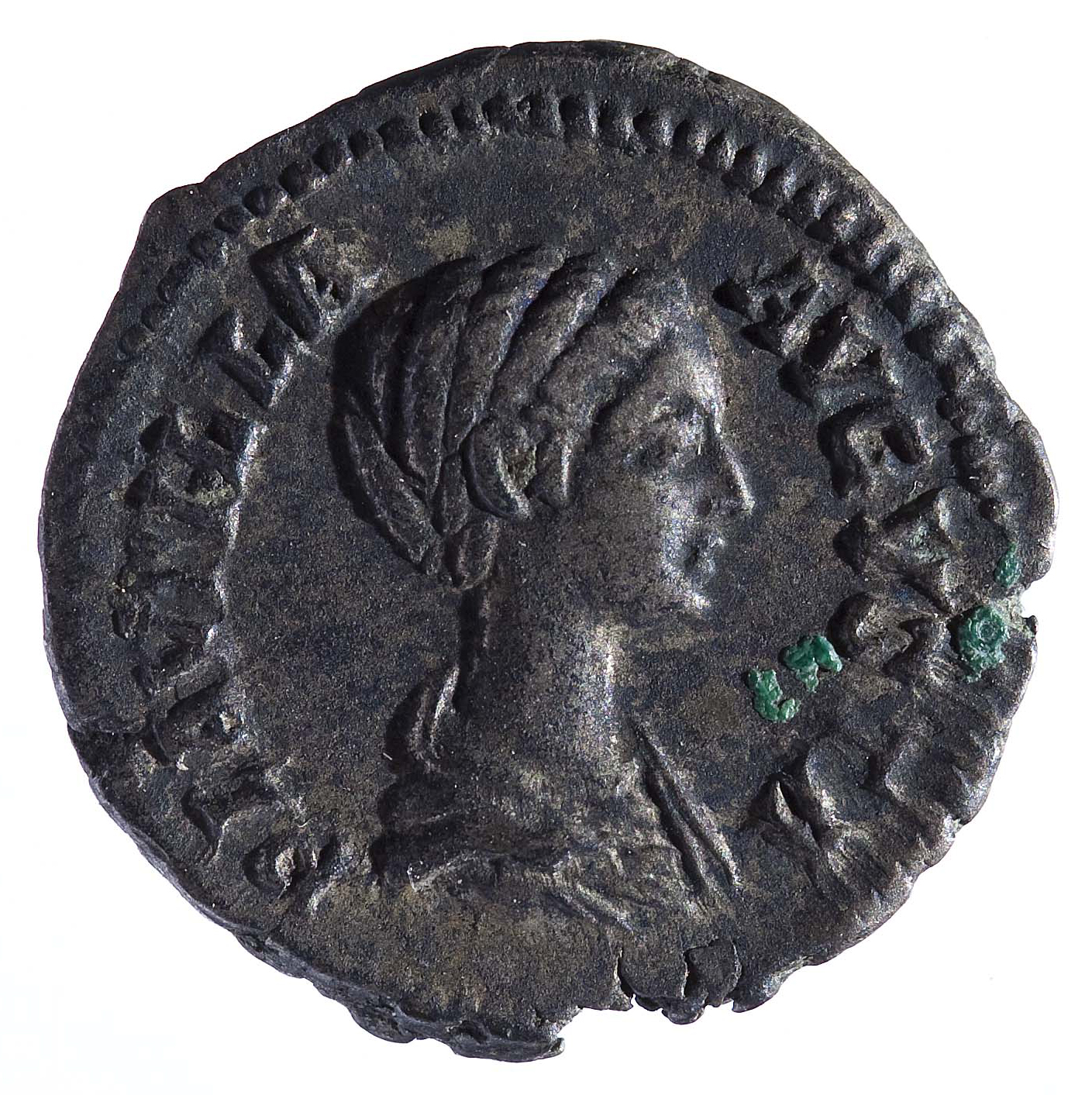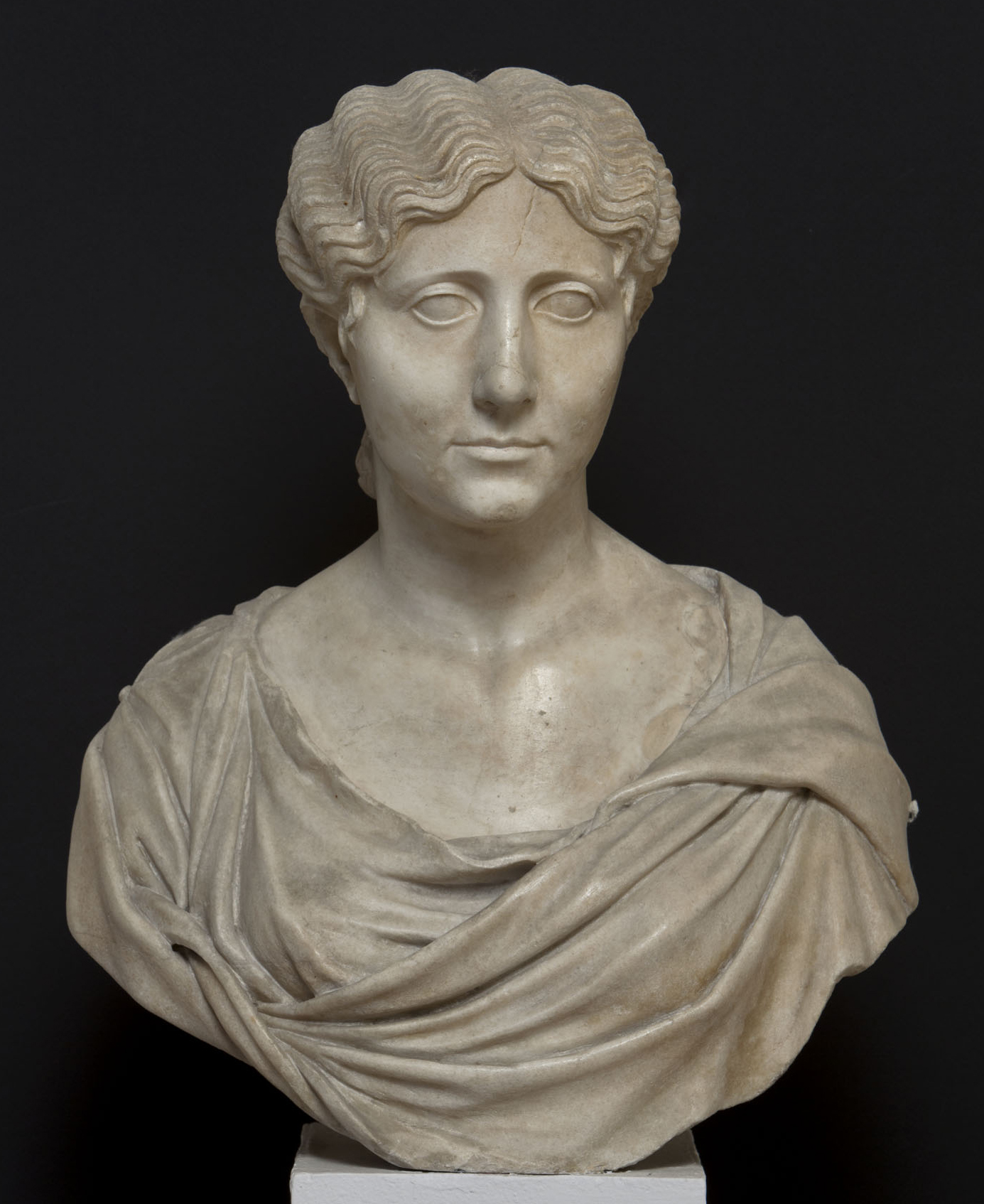
Dominae and fashion: Julia Domna, the female side of Severan power
According to Cassius Dio, after Marcus Aurelius’ death Rome would have passed «from a kingdom of gold to one of iron and rust»: indeed, after the killing of Commodus in 192 AD, it began a serious crisis, in which the military factor became predominant. The situation normalized with the rise of Septimius Severus, in 193 AD: coming from Africa, he founded a new dinasty with the fundamental help of his wife, Julia Domna. Born in Emesa (Syria), she was the daughter of a Sun god’s priest: Severus would have married her, probably in 187, because predestined by some omens to be wife of a ruler. Together they resumed the dynastic principle from the final phase of antonine age: Cassius Dio tells of a Severus’ dream in which Faustina the Younger (Marcus Aurelius’ wife) was preparing the wedding bed for the second wife of the emperor.
Julia Domna exerted some influence on her husband, receiving many honors like the titles of mater castrorum and mater Augusti et Caesaris, related to their sons Caracalla and Geta; furthermore, she was the first augusta to attend at the Ludi Saeculares ceremony, in 204 AD. Her oriental origin may have favored the authoritarian bend of Severus from 195, demonstrating her political skill joint with the commitment in cultural sector: as her influence waned in favor of the rising of Plautianus, the prefect of the praetorian guard, she founded a circle of intellectuals which it probably included personalities like Philostratus and Ulpian. An absolutely innovative phenomenon as promoted by a female figure, inspiration of literary works and interested in religious matters: the latter is witnessed by her priestly roles.

Bronze coin from Ionia, Reverse: Goddess Rome seated with helmet, mint of Smyrna, 214-215 AD
Associated to different divinities, Julia Domna’s prestige was affirmed through several sculptural and monetary portraits or inscriptions dedicated to her both in the East and in the West. They show us her image and peculiar characteristics. An example arrives from the museum medal collection, thanks to a bronze coin minted in Smyrna, in the Roman province of Asia (BMC Greek XVI, n. 389): the goddess Rome is depicted in reverse, seated and with helmet, holding in the right hand a tetrastyle temple and in the left one a spear; the inscription is ΠΡΩ ΑCIAC Γ ΝΕΩΚΟΡΩΝ CΜΥΡ. On the occasion of the journey to the East made between 214 and 215 AD from Julia and the emperor Caracalla, the city obtained for the third time a neokoria, that is the title of “guardian of the temple”, generally granted for the construction or dedication of sacred buildings to the imperial cult. In obverse is the portrait of Julia Domna, with the inscription IOY ΔOMNA CEBACTH: her hairstyle sticks out from her draped bust, her wavy hair cover the ears and weaves in a big bun on the back of the head. This kind of hairstyle reconnected to the antonine augustae fashion, and during the 3rd century it underwent new accentuated changes, but it is necessary to underline a fundamental aspect: effectively, they were wigs. Their use was very common, but in this period this hairstyle had a real explosion, as Tertullian reported too. They even were reproducted in the scultural portraits, highlighting the chromatic and morphological differences compared to the authentic hair, which could partially emerge under them. This Julia Domna’s portrait tipology, despite the dating, seems to match that of youthful age rather than the second dedicated to her: it was inaugurated on the Leptis Magna Arch and shows a more elongated cap on the sides, with braids framing the face from the temples and a back bun with concentric circles; it was the first signal of a visible evolution among the severan women. Finally, the beauty of the features on Julia’s monetary portrait would confirm the Historia Augusta version, although this source tales of an incestous marriage between her and the son Caracalla.
After Septimius Severus’ death in 211 AD, the empire should have been divided between his sons, but the next year their enmity led to a fratricide: according to Cassius Dio, Geta died in Julia Domna’s arms, killed by his brother Caracalla. During the reign of Caracalla, Julia retained a relevant position and in this period, perhaps due to her influence, was issued the edict he granted the Roman citizenship to all inhabitants of the empire. The emperor delegated several administrative tasks to his mother until 217, when he was killed by Macrinus, the prefect of the praetorian guard, during a military spedition against the Parthians. The usurper Macrinus, fearing Julia’s prestige and her link with the army excluded the augusta from the leaders of the State, and exiled her to Antioch: she was debilitated by a wound she had inflicted herself after the news of her son’s death, and she decided to let herself die. Afterwards, Elagabalus deified her moving her ashes in Hadrian’s mausoleum.
Anyway, Julia Domna performed her matron and empress role well, becoming a point of reference for her female and Syriac successors in the Severan dynasty.
Michele Gatto
Bibliography
BERTOLAZZI R. 2017, Julia Domna: public image and private influence of a syrian queen, Calgary.
BMC Greek XVI = R.S. Poole, A catalogue of the Greek coins in the British Museum. Ionia, Bologna (rist.) 1964.
BOATWRIGHT M.T. 2021, Imperial women of Rome: power, gender, context, Oxford.
BUCCINO L. 2011, “Morbidi capelli e acconciature sempre diverse”. Linee evolutive delle pettinature femminili nei ritratti scultorei dal secondo triumvirato all’età costantiniana, in E. La Rocca, C. Parisi Presicce, A. Lo Monaco (a cura di), Ritratti. Le tante facce del potere (catalogo della mostra, Roma, Musei Capitolini, 10 marzo – 25 settembre 2011), Roma 2011, pp. 360-383.
BURRELL B. 2004, Neokoroi: greek cities and roman emperors, Leiden/Boston.
CALZA R. 1960, s.v. Giulia Domna, in Enciclopedia dell’Arte Antica, Roma, pp. 922-924.
FERNANDES E. 2015, Le emissioni di Giulia Domna: strumento per radicare una dinastia e di esaltazione dell’augusta, in “Secondo Bollettino Circolo Numismatico Partenopeo” 2, pp. 37-54.
MARZO L. 2019, Mater et Augusta: la “maternità istituzionale” di Giulia Domna tra evidenze storiche e finzioni letterarie, in “Classica et Christiana. Periodico del Centro di Studi Classici e Cristiani” 14, pp. 165-185.
VIARENGO G. 2007, Il circolo di Giulia Domna tra proiezioni e realtà storica, in “Materiali per una storia della cultura giuridica” 1, XXXVII, pp. 191-201.




